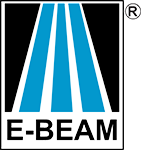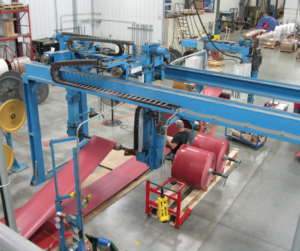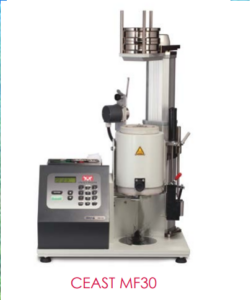In the latest Q&A with Tech Services, Dr. Gustavo Varca discusses the Radioactive Materials (RAM) program, which focuses on the sterilization of radioactive materials used in medical applications. Gustavo delves into the intricacies of the RAM program and explores its significance in the field of healthcare.
Sterilizing Radioactive Materials: A Necessity
The first question that arises when discussing the sterilization of radioactive materials is why it is necessary in the first place. Gustavo explains, “If it is going to be in contact with a biological system, it must to be sterilized, regardless if the radioactive materials are used for diagnostics for treatment or for theranostics, which combines both.” The need for sterilization arises from the fact that materials used in medical procedures must be free from any potential biological contaminants to ensure patient safety. However, in the case of radioactive materials, the levels of radiation they emit may not be sufficient to induce sterilization; And a specific process is required to sterilize these materials effectively, in case terminal sterilization is the chosen path.
Validating the Sterilization Process
To ensure the effectiveness of the sterilization process for radioactive materials, a sterilization validation process is followed. Gustavo explains, “We tend to follow the procedures that are in the ISO for medical devices or implantables. If it’s an implantable, we will look at the ISO and look for the specifics for implantables.” This validation process involves steps such as material exposure, dose mapping, and dose auditing. The goal is to validate the process as if it were a regular material sterilization process.
Handling and Processing Radioactive Materials
Handling and processing radioactive materials requires strict adherence to regulations and safety protocols. Gustavo explains, “We have to get everybody trained. Only authorized and trained personnel are allowed to work in any part of the program.” This means that a dedicated team is required in multiple areas of the company, including the lab, shipping and receiving, and material handling. The RAM program must comply with federal regulations, state regulations, and the Department of Transportation (DOT) regulations for hazardous materials. Gustavo highlights the importance of training and effort, stating, “It’s a very robust and serious program. I’m very proud to be part of it.”
The Role of Packaging in Radioactive Material Sterilization
Packaging plays a crucial role in the sterilization of radioactive materials. Gustavo explains, “You have the requirements of the Department of Transportation, which requires you to have a specific label based on the radiation levels and the radioactive count.” The packaging must meet specific requirements to ensure the safe transportation of the materials. Once the materials arrive at the facility, they are handled with special care and transported to the accelerator. Gustavo adds, “Those materials don’t come in plastic bags. They usually come in metal cases or very dense materials to shield radiation.”
The Power of E-Beam Accelerators
E-beam accelerators play a crucial role in the RAM program. Gustavo explains, “[E-BEAM Services’] beams have an intermediate energy. They are considered medium voltage, medium energy accelerators, or around 5 million electron volts.” These accelerators offer high energy with a lot more precision, allowing for efficient and high-quality sterilization. The energy of the accelerators can be tuned to meet specific requirements. Gustavo states, “We can tune the energy to reduce the outreach of electrons. So we can make it a surface treatment if we would like to do so, but we can also get a deeper penetration if required.” This flexibility in energy control allows for tailored sterilization processes based on the specific needs of the materials being treated.
Implications and Future Outlook
The RAM program has significant implications for the field of healthcare. By enabling the sterilization of radioactive materials, it ensures the safety and effectiveness of medical procedures involving these materials. Gustavo highlights the availability of their services, stating, “Our services are available. We have open capacity, and this particular program is one of those that we are really proud of having.” The RAM program opens up possibilities for companies to send their radioisotopes for sterilization, further expanding the reach and impact of this program.
Looking ahead, the RAM program is expected to continue evolving and adapting to advancements in medical technology. Gustavo expresses his enthusiasm, stating, “If there is any opportunity for other companies to try to send us more radioisotopes, I’ll be more than happy to work on each case and evaluate what can be done.” As the demand for sterilized radioactive materials grows, the RAM program will play a crucial role in meeting these needs and ensuring the safety of patients.
Additional Resouces:
Why do you perform a dose audit?
Introducing STAT Sterilization Validation Services
Q&A with Tech Services | Crosslinking, Sterilization, and Specialty Processing




